Australia’s next hot property markets: 17 suburbs and regions tipped to boom

In our previous article, we outlined six key traits of high-growth suburbs - the factors that separate property hotspots from underperforming areas. But at Livewire, we like to go a step further and put names to places.
So, which Australian suburbs and regions are best positioned for strong capital growth? Our expert panel including Ray White's Nerida Conisbee and Capital Property Advisory’s Matthew Hughes weigh in with their top picks.
In Part 2 of this mini-series on residential real estate, they break down the hotspots across most states, highlighting the key drivers that are shaping these markets including supply-demand, limited land release potential, gentrification, infrastructure spending and more.
As a bonus, I’ll also share my wisdom as a well-travelled landlord to identify areas I believe have outperformance potential, while alcove’s Chris Bates weighs in with a contrarian viewpoint on why property investors shouldn’t put too much weight on postcodes.
For investors wanting a snapshot of property prices in these areas, you’ll find median house/unit values and how they've changed in the past 12 months for each suburb in the table at the end of the article.
NSW: Western Sydney and high-demand suburbs
Top picks:
- Outer Western Sydney (Conisbee’s and my top pick)
- Dulwich Hill & Engadine (Hughes’ picks)
Sydney remains Australia’s most expensive property market, but that doesn’t mean there aren’t pockets of value, particularly in areas benefiting from major government infrastructure investment.
According to Conisbee, Sydney’s outer western suburbs offer some of the strongest investment opportunities:
“The outer western suburbs of Sydney are the most promising. Not only are they more affordable, but they’re also benefiting from a high level of state government investment in infrastructure and development," Conisbee says.
She makes an important point, and I’d like to add my personal perspective - this area is going absolutely gangbusters, and I'd encourage any serious investor to take a self-driving tour of the Western Sydney area to see the transformation firsthand.
Western Sydney: The infrastructure boom driving growth
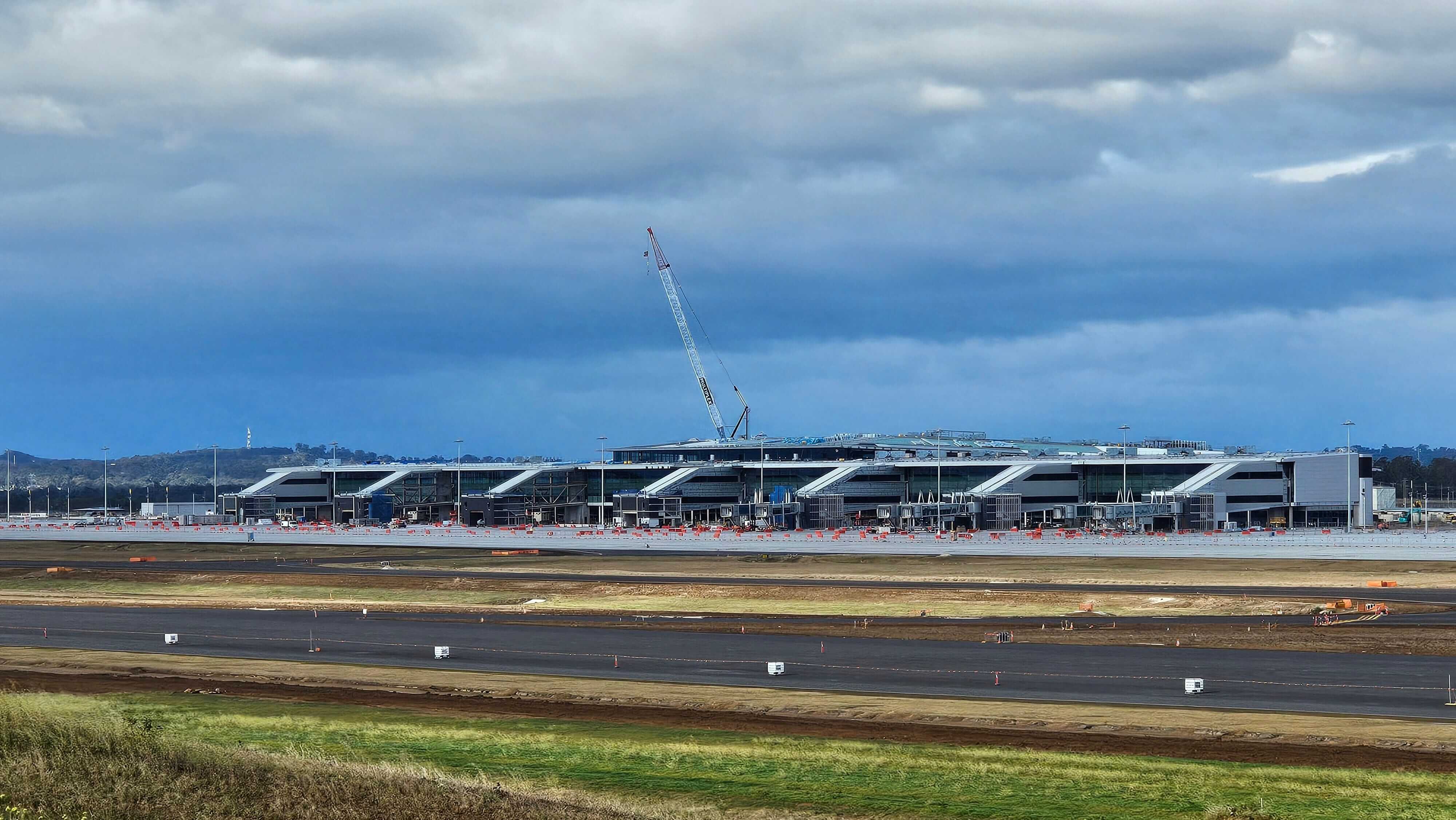.jpg)
Penrith (2750) and its surrounds have undergone extraordinary gentrification over the past decade, fueled by major infrastructure investment and strong population growth.
- The Western Sydney International Airport (Nancy-Bird Walton) is a $5.3 billion project, set to open next year, creating nearly 30,000 jobs within five years.
- The Western Sydney City Deal includes an $11 billion metro connection, linking Sydney Metro to the airport, seamlessly connecting key parts of the city.
These aren’t just plans on paper, they’re billions in real investment dollars already reshaping the region. For those interested in long-term opportunities, I highly recommend reading the Delivering Bradfield City Centre planning document. The government’s vision includes:
- 10,000 new homes
- 20,000 new high-quality jobs in advanced/value-added industries
My dad bought a single storey house in Whalan (2770) in 1998, and I followed in his footsteps by purchasing a townhouse in Emerton (2770) in 2012. Without a doubt, these are the best investments we ever made (see general values across the area below).

I continue to be optimistic on the area on the basis of the enormity of the investment, continuing gentrification, modern construction zones and the new wave of high quality jobs being created at a time when prices in the area are significantly lower than the inner and middle rings of Sydney.
Beyond Western Sydney: The charm of the Inner West and the Shire
Meanwhile, Hughes highlights Dulwich Hill (2203) and Engadine (2233) as two Sydney suburbs with strong growth potential, driven by:
- 70%+ owner-occupier demand (reducing volatility)
- Proximity to employment hubs and major transport upgrades
- Tightly held housing stock (limited new supply)
Dulwich Hill, in particular, benefits from its Inner West location, an area experiencing gentrification and increasing density, yet maintaining strong desirability due to its heritage streets and top school zones.
While Dulwich Hill and Engadine are nearly an hour apart in good traffic, Hughes highlights that adding new housing stock to either suburb is extremely challenging:
“In Dulwich Hill, character homes and heritage preservation rules restrict major development, keeping supply low. Meanwhile, Engadine is surrounded by the Royal National Park, limiting urban sprawl," he says.
At the same time, both suburbs offer strong lifestyle appeal:
- Dulwich Hill boasts trendy cafés, parks, and proximity to Marrickville Metro shopping centre.
- Engadine benefits from its proximity to the Sutherland Shire while offering a more affordable price point than Cronulla.
With limited supply and high demand, both areas remain highly attractive for long-term property investors.
Queensland: BOOMING Brisbane AND a regional hotspot
Top picks:
- Logan (Conisbee’s pick)
- Petrie & Geebung (Hughes’ pick)
- Cairns (my pick)
Brisbane is experiencing strong population growth, with its outer suburban and regional areas among the biggest beneficiaries. It would be remiss not to mention that Brisbane is also set to host the 2032 Olympic and Paralympic Games, a major catalyst for investment.
The Queensland government is expected to spend billions in the lead-up to the Olympics, including the development of athletes’ villages and essential infrastructure. This comes on top of the $50 billion+ already committed over the next four years for new hospitals, hospital expansions, and major transport projects, such as:
- A $5.5 billion new rail line linking Brisbane and the Sunshine Coast
- $5 billion in major upgrades to Brisbane Airport
- The $1.3 billion New Coomera Hospital, a 404-bed facility
Notably, while infrastructure spending is declining or showing modest growth in most other states, Queensland’s project pipeline continues to soar, reinforcing its long-term outlook. With values climbing in core Brisbane suburbs, Conisbee believes buyers will be pushed further out.
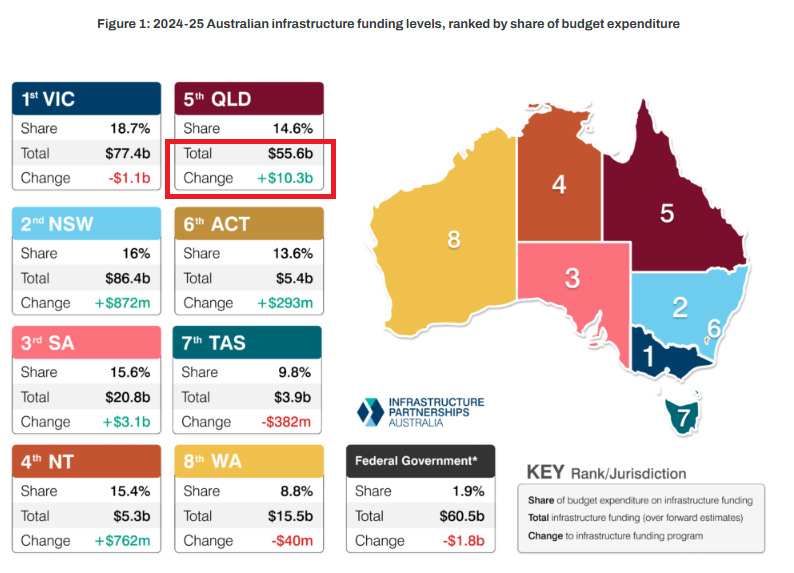
Logan: Affordability meets growth
She tips Logan (4114) as one of the strongest areas for long-term capital growth potential:
“The Logan region is seeing population growth as it's relatively affordable. It's also an area that will benefit from broader economic growth and some of the demographic changes taking place in Brisbane," she says.
Petrie & Geebung: Beneficiaries of the boom
Meanwhile, Hughes highlights Petrie (4502) and Geebung (4034) as two key Brisbane suburbs benefiting from infrastructure upgrades, great local amenities and gentrification.
Petrie, located some 29km north of Brisbane CBD, is emerging as a key university hub due to the University of Sunshine Coast's (USC) Moreton Bay campus driving demand from students and staff.
"75% of properties in Petrie are owned by occupiers, creating a stable housing market. It's much cheaper than Brisbane’s inner suburbs while still offering great lifestyle appeal, and the USC Moreton Bay campus is driving demand from students and staff. Investors are benefiting from university-driven rental needs," he says.
Hughes also sees Geebung as a prime opportunity, offering strong capital growth potential while being around 14km from Brisbane’s CBD.
“Geebung is more affordable than neighbouring suburbs like Wavell Heights and Kedron, attracting buyers priced out of those areas. It's close to Brisbane CBD and major employment hubs like Chermside and we’re seeing an increasing number of knockdown-rebuilds and renovations boosting property values," he says.
Cairns: From hot weather to hot property hotspot
Cairns (4870) is no longer just a tourist destination, it’s one of Queensland’s most exciting property markets.
There’s a magic to the tropics that makes you want to stay forever, and when I talk about this stunning city to my friends, I often say:
"You can leave Cairns, but Cairns never leaves you."
The rise of remote work post-COVID has reshaped Cairns' demographics, with professionals and digital nomads making the move permanently, alongside a resurgence of working holiday makers.
This shift has tightened housing supply, driving a 50% surge in house prices over the past five years, while the vacancy rate has plunged to just 0.80%. Even my friends who have lived in Cairns since the 2000s struggle to find rentals.
While many still see Cairns as just a holiday hotspot, its economy is rapidly diversifying. Agribusiness, healthcare, government jobs, and aviation are fueling long-term demand, firmly putting Cairns on the investment map for those looking beyond the capital cities.
Western Australia: west coast best coast (the data proves it)
Top picks:
- Kallaroo & Leederville (Hughes’ pick)
- Baldivis & Outer Perth Suburbs (Conisbee’s pick)
Perth’s property market has been one of the strongest performers in recent years, attracting investors looking for affordable housing, high rental yields, and strong population growth.
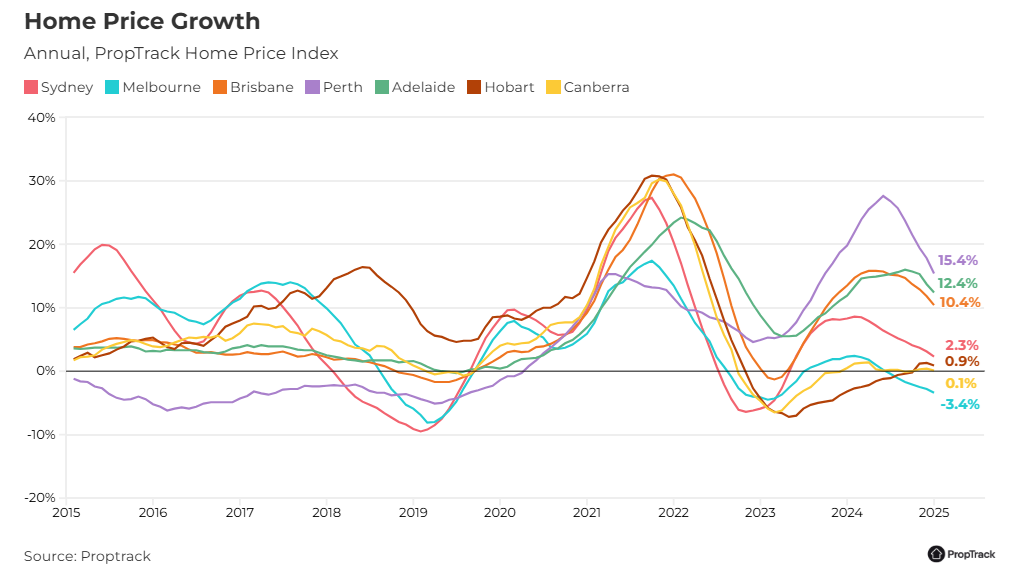
Still, unlike the east coast, Perth remains relatively affordable, making it an attractive option for investors seeking long-term capital growth in an economy blessed with mineral wealth.
AUSTRALIAN MEDIAN HOUSE PRICES
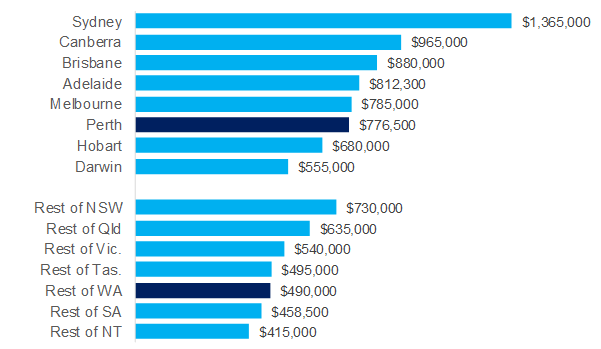
Kallaroo and Leederville: Coastal demand and inner-city gentrification
Northern coastal suburbs in Perth continue to experience long-term price appreciation due to lifestyle appeal and limited land availability. To this end, Hughes nominates Kallaroo (6025) as an undervalued lifestyle play.
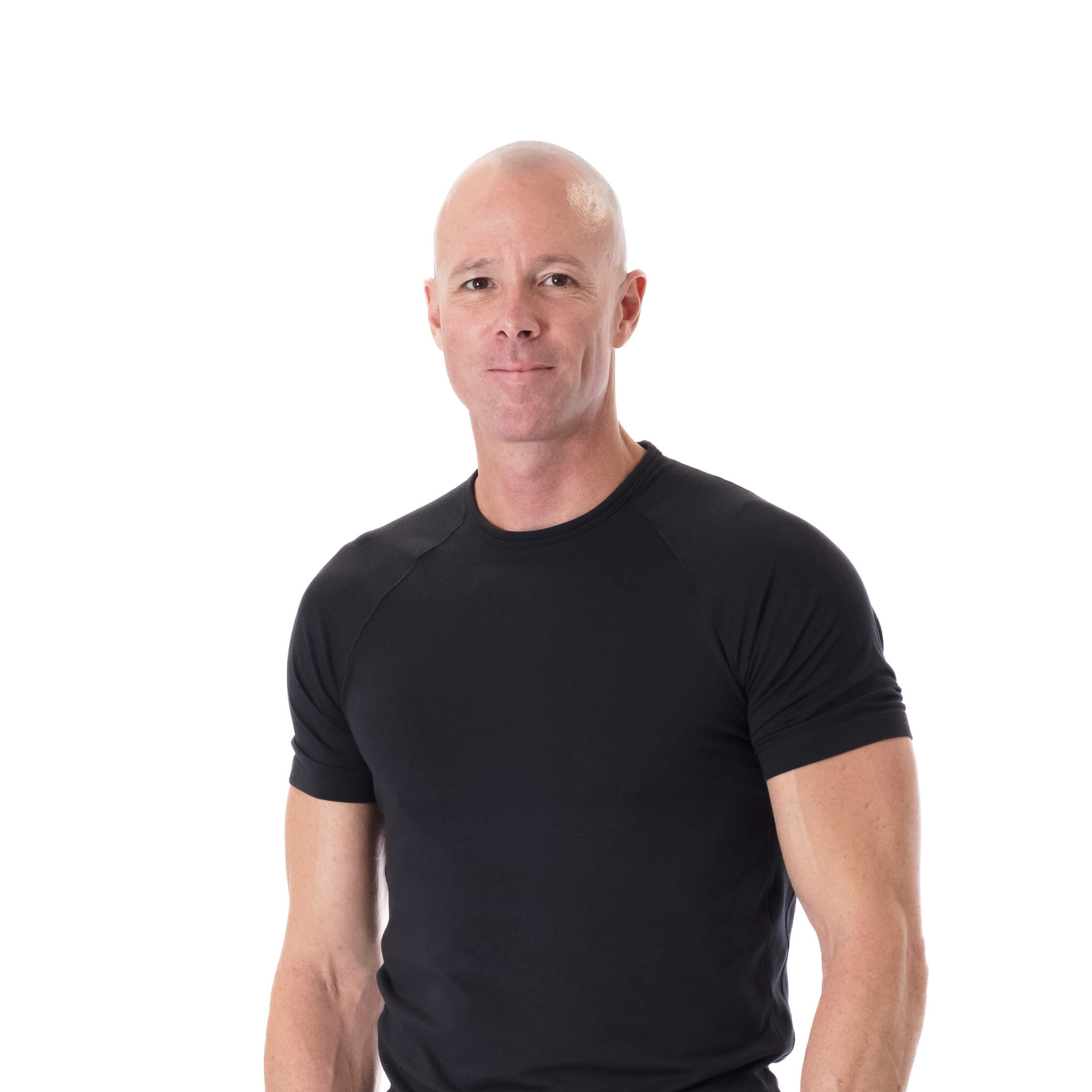.jpg)
“Its close coastal lifestyle hubs, including Hillarys Boat Harbour and Whitfords Shopping Centre and the under-construction Ocean Reef Marina, which all add to demand. Prices have remained more affordable compared to nearby premium suburbs like Sorrento and Hillarys, suggesting room for growth," he says.
Meanwhile, Leederville (6007), just 3km from Perth CBD, is one of the city’s most sought-after urban hubs is a gentrification hotspot attracting young professionals and high-income buyers:
“Leederville is one of Perth’s most vibrant nightlife and café precincts, attracting high demand from young professionals. Its got excellent public transport links with Leederville train station providing direct city access while still more affordable than Subiaco and Mount Lawley, with room for upward price movement," Hughes says.
Baldivis and outer Perth suburbs: Affordable growth and infrastructure investment
For Conisbee, Perth’s outer suburbs, particularly areas like Baldivis (6171), continue to offer strong value and long-term upside:
“Newer home build areas like Baldivis present an interesting opportunity. With rising construction costs, homes built two to three years ago can now be purchased at a comparatively lower price," Conisbee says.
She also encourages property investors to look at the region south of Perth heading toward Margaret River. While Margaret River itself is very expensive, the surrounding outer suburbs offer more affordable opportunities.
Victoria: Melbourne’s western growth corridor
Top picks:
- Dandenong North & Langwarrin (Hughes’ pick)
- Footscray to Sunshine and Outer West (Conisbee’s picks)
Hughes highlights Dandenong North (3175) and Langwarrin (3910) as two Melbourne suburbs with strong fundamentals, benefiting from employment hubs, school catchments and tight housing supply.
At a 2.4% annual population growth Victoria is Australia’s second-fastest growing state. In this regard Hughes agrees that migration is driving demand, particularly in undervalued areas.
“Dandenong is more affordable than Springvale or Glen Waverley, attracting value-seeking buyers. The area is also seeing increasing migration and cultural diversity drive new business and demand. Langwarrin is close to the Mornington Peninsula, boosting lifestyle-driven demand with no major land releases due to surrounding conservation zones, keeping supply tight," he says.
He added investors are particularly drawn to Langwarrin for its high rental yields and new developments bringing modern housing options.
Melbourne’s western suburbs are undergoing a major transformation and affordability is a big driver. According to Conisbee, this part of Melbourne, which includes Footscray (3011) and Sunshine (3020), has become increasingly popular.
“These areas are becoming increasingly popular not just with younger buyers but also with recent migrants. They remain highly affordable compared to other parts of Melbourne, yet their attractiveness continues to grow as more people move in," Conisbee says.
South Australia: Affordable Beachside LIVING
Top picks:
- Port Adelaide & Christies Beach (Conisbee’s picks)
South Australia remains one of the most affordable states for property investment, and Adelaide’s housing market has quietly delivered strong capital growth in recent years.
Unlike Sydney and Melbourne, Adelaide offers investors a rare chance to buy relatively affordable properties near the coastline, particularly in areas benefiting from new infrastructure, economic growth, and gentrification.
Once an industrial hub, Port Adelaide has undergone significant urban renewal, with heritage-listed buildings converted into high-end apartments, new cafés and restaurants opening, and a major push to make the waterfront a lifestyle destination. Further south, Christies Beach is also gaining traction among investors.
"You can get beachside properties for quite affordable prices, so those are definitely those are some of the areas that I'd be looking at."
Recap from the experts: Key market drivers for 2025 across all markets
- Impending rate cuts – Rate cuts will naturally boost buyer confidence as the borrowing capacity of both owner-occupiers and investors increases with lower rates (Conisbee).
- Population growth – With natural birth rates softening across Australia, ensure you are investing in cities that attract high levels of interstate and/or international migration, to ensure demand keeps pace with supply moving forward (Hughes).
- Gentrification - People love flocking to gentrifying/gentrified suburbs. Look for areas with trendy cafes and restaurants popping up (Conisbee).
- Affordability shifts - Buyers priced out of higher-end markets seeking value in underperforming nearby suburbs (Hughes).
- Potential change to macro-prudential lending policies - if APRA were to reduce the excessive serviceability buffer that is currently at 3%, down to 2.5% this would further enhance borrowing power and drive upgraders into their aspirational home, suburb, or both – creating a wave of demand that would move up through the middle pricing tiers, into the luxury market (Hughes).
Contrarian view: Why hot suburbs aren’t always the best investment
You’ll notice that alcove’s Chris Bates didn’t name a top pick—and for good reason. He believes that chasing trendy, high-growth suburbs isn’t always the smartest move:
“We don’t believe in buying ‘hot suburbs’ because it’s rare for one to significantly outperform others over the long term. When one suburb rises, surrounding areas often become more affordable and desirable.”
Instead, Bates advises investors to focus on quality—buying a better asset in a better street within a less currently desirable suburb, rather than settling for a lower-quality property in a trendy area.
The Election factor: How Will Politics impact property?
With an upcoming Federal Election, property investors need to consider potential headwinds.
#1. Lower migration and housing supply impact (Conisbee)
A proposed cut to permanent migration could slow housing demand, but also restrict labour needed for construction, exacerbating supply issues.
#2. Policy uncertainty and market sentiment (Hughes)
Election periods historically cause temporary slowdowns in property transactions as buyers and sellers wait for clarity on policies around negative gearing, taxation, and affordability.
#3. The bigger risk - interest rates & inflation (Bates)
Sticky inflation and prolonged high interest rates. Any policies that fuel inflation further could force rates higher, making property investment even more challenging.
SNAPSHOT OF THE 17 SURUBS/REGIONS MENTIONED IN THIS WIRE
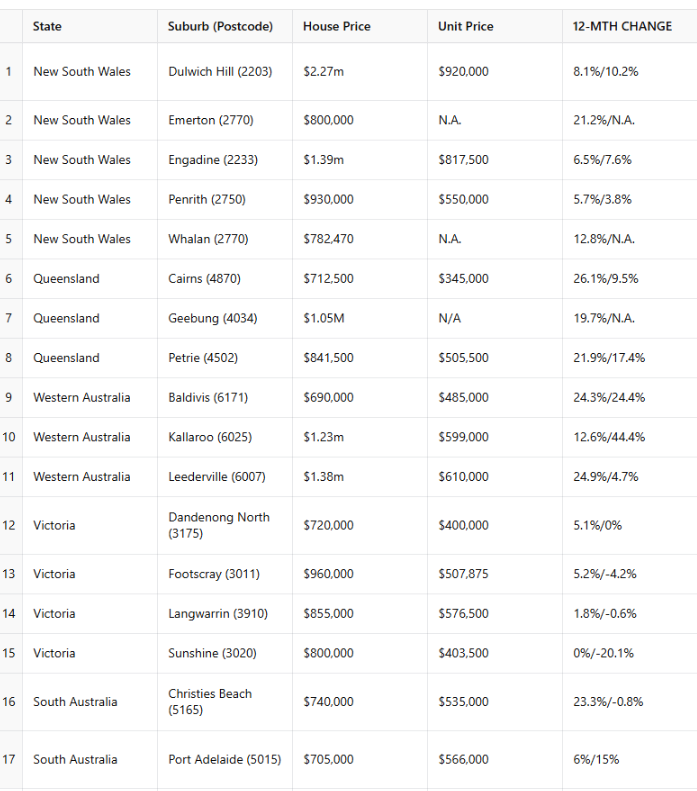
YOU CAN'T GET RICH UNLESS YOU OWN PROPERTY!
We had plenty of feedback from readers on Part 1 of this series, where we outlined the key traits of high-growth suburbs. Some of you remain unconvinced about the merits of property investing, especially given the upfront costs and holding expenses.
In the next wire, I’ll be writing an opinion piece on why I do not believe the average Australian investor can build real wealth without owning property. Stay tuned!
5 topics

